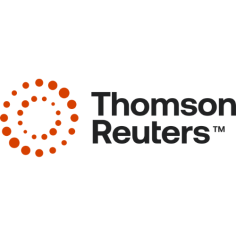Industry analysis from Thomson Reuters: Don’t dodge a faster draft
This article was also featured as an industry analysis in the May 2017 issue of LPM magazine, download LPM.
Serving clients profitably is the second greatest challenge for law firms after attracting valuable clients, according to Thomson Reuters Legal UK & Ireland’s 2016 report: Pedal harder, pedal smarter. Lawyers now need to address the challenge of clients who want more for less, and deliver better, faster, and cheaper legal services. The legal market is undoubtedly entering an era of unparalleled competitive intensity, and firms that fail to focus on profitability face a future that is, at best, uncertain.
Drafting is a core component of legal solutions and something that junior lawyers spend far too much time on – and often struggle to deliver and check quickly. It’s far from revelatory to state that automating drafting is vital to reducing the cost of service delivery – and the technology to automate this critical competency isn’t new.
Yet it’s still not clear whether lawyers understand the correlation between this core, bread-and-butter business activity and long-term secure business growth. Do they understand how these services increase output, or help the firm secure competitive advantage?
Reimagining your drafting workflow is central to reducing the cost of service delivery, and increasing a firm’s ability to win and retain clients. Automating processes provides the chance to create consistency, manage margin, and free up fee earners’ time to focus on personalised, added-value components of a legal solution. It takes firms a step further to the holy grail – that critically important, improved client service experience.
Briefing magazine’s 2016 report, Solving the automation puzzle, showed that most top 100 firms’ document creation processes are heavily influenced by automation technologies.
Where drafting solutions are purchased, many are chronically underused. Just 2% of firms surveyed said drafting automation or tools were fully utilised firm-wide – and while many firms evangelised the potential of drafting solutions, few realised all the benefits.
In his book Tomorrow’s Lawyers, Professor Richard Susskind refers to the “unhelpful if often romantic fiction” that legal work is bespoke – but does that notion persist with SME firms as well as large practices? Are fee earners still applying cottage industry methods to a modern world in which mass customisation has long become mundane? Clients select firms based on prior experience – and if firms aren’t forwardthinking enough to use technologies to provide clients with a superior service, do they deserve to win them at all?
Not providing a top-range service is dangerous in a world where clients are actively looking to find the same solution for less money – so, reliance on traditional solutions is madness. Beyond pressure on costs and the move from hourly billing, wider factors such as employee engagement and retention make creative use of new technology essential.
Firms often acknowledge that clients would value more automation. Today’s technology provides a myriad opportunities to reimagine practices and free lawyers from the tyranny of routine tasks. The reward: maximisation of business development, the freedom to focus on creative, added-value solutions for their clients, and, in turn, to build better relationships of trust.
Fee earners need to move beyond fear of change and worry over new risks. Thomson Reuters solutions avert risk by providing extra scrutiny to eliminate errors. According to a Thomson Reuters customer survey, using Drafting Assistant can save around 60% of the typical review time spent on documents – putting market-leading content from Practical Law and research and analysis tools at your fingertips, and proofreading to ensure error-free, citation-correct documents. Contract Express now provides over 300 pre-automated templates and standard clauses prepared and maintained by the editorial gurus behind Practical Law. Users can quickly create bespoke versions of these templates for their use, and automate and use their own documents.
These solutions offer the opportunity to collaborate with clients, use electronic signatures, and store signed documents. With no risk of starting from scratch or from an old document, these solutions can result in a time saving of more than 80% from traditional methods, according to research from Thomson Reuters.
Our integrated suite of solutions puts firms on the path to full automation. Firms can begin with proofing and checking tools and standard precedents, such as those included in Practical Law, and progress to full customisation of Practical Law or their own documents using questionnaire approaches via Contract Express to collaborate with clients. With these solutions, lawyers can access templates anywhere, any time and can make key gains around speed, accuracy, and efficiency.
Drafting automation solutions enable firms to stop reinventing the wheel, giving them the freedom to be creative for clients. While barriers remain – cost, fear of change, lack of understanding, and lack of engagement – firms need to break through. The question shouldn’t be: “Are you using automation technologies?” but “Can you afford not to?” How will you improve the drafting efficiency of your law firm?



